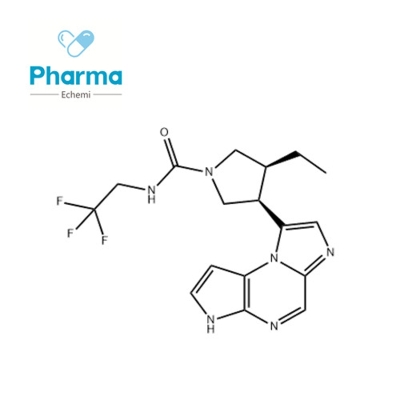Science Advances . . . Breakthrough, Zhejiang University Tang Ruikang / Wang Ben developed a universal panda blood, is expected to solve the problem of rare blood type blood transfusion.
-
Last Update: 2020-07-22
-
Source: Internet
-
Author: User
Search more information of high quality chemicals, good prices and reliable suppliers, visit
www.echemi.com
Inature rhesus monkey D (RHD) is one of the most important immunogenic antigens on red blood cells (RBC).however, the supply of RhD Negative blood is often in serious shortage in clinical practice, and the positive and negative conversion of RHD antigen is still a great challenge.on March 21, 2020, Tang Ruikang and Wang Ben of Zhejiang University published a joint communication entitled "surface anchored framework for generating RHD epitope steady red blood" Cells "research paper, which is designed to produce RhD negative RBC through the three-dimensional (3D) cross-linked skeleton of a rational design of polysialic acid (PSA) tyramine hydrogel to produce negative RBC, has a flexible texture to ensure cell membrane stability.the new technology of anchoring frame can balance the fluidity of modified RBC membrane and RHD antigen, and successfully transfuse engineered RHD positive RBC to RhD Negative receptor (mice and rabbits) without immunogenicity for the first time.this work provides an effective method to improve the cell surface of universal blood transfusion, and shows the potential of rational design of cell surface engineering for transfusion and transplantation medicine.the pioneering research of Karl Landsteiner in the 19th century laid the foundation for our current study of blood types.the main human allogeneic antigen system involves ABO, rhesus monkey (RH), MNS, Lutheran Church and Kyle blood groups.the Rh blood group system is a well-known human blood group polymorphism in alloimmunity, and it includes more than 50 different serological specificity, which makes the system particularly important and challenging for biomedical scientists and clinicians.in Rh blood group, D antigen is the most immunogenic and clinically important epitope.schematic of RBC surface engineering program, approximately 85%, 95% and more than 99.5% of Caucasians, Africans and East Asians respectively have RHD positive blood.as a rare blood group, RhD Negative Blood for blood transfusion is in serious shortage and supply is extremely insufficient, especially in emergency situations.RhD Negative individuals exposed to RHD positive blood may cause severe immune reactions, including hemolysis, which is life-threatening.converting RHD positive blood to RhD Negative blood may be a feasible strategy to develop potential therapeutic methods, but there are great challenges.red blood cell (RBC) antigen can be removed by enzyme to convert type A or B RBC into type O RBC successfully.however, this process has nothing to do with the immunogenic epitopes of Rh antigen, and the loss of RH related peptide will lead to the disintegration of the whole cell membrane.using a proof of concept approach, gene editing based on nuclease based blood group determination can lead to the transformation of D-positive cells into D-negative cells.however, this editing may lead to unexpected mutations and has not been evaluated in vivo. another potential strategy to construct a reasonable surface crosslinking framework for universal RBC modification is to use chemical polymer camouflage for cell encapsulation. however, polymer based "molecular brush" camouflage is always incomplete, so the technology has not been further developed. although some biomimetic molecules, such as polydopamine (PDA), can shield the point to point of antigen on RBC, this process will always lead to a significant decrease in membrane fluidity, so that the modified cells are prone to increase in cell brittleness. In this study, a new technology has been developed through the three-dimensional (3D) crosslinking of the rational polysialic acid (PSA) - tyramine hydrogel. The skeleton is used to engineer the cell surface to produce RhD Negative RBC. It has flexible texture to ensure the stability of cell membrane. the new technology of anchoring frame can balance the fluidity of modified RBC membrane and RHD antigen, and successfully deliver engineered RHD positive RBC to RhD Negative receptor without immunogenicity for the first time. biochemical analysis of immune response and organ function in rabbit model after immune stimulation. In conclusion, this study represents a complete attempt to produce RHD epitope stealth RBC. the proposed universal RBC is generated by a simple preparation method, which involves cell surface engineering and effective RBC antigen masking, which may be used in emergency blood transfusion. this study demonstrates a biocompatible membrane anchored self-assembly method for cell surface engineering. this method can promote immunological application by masking the antigenicity of tissues and cells at a single cell level. reference message:
This article is an English version of an article which is originally in the Chinese language on echemi.com and is provided for information purposes only.
This website makes no representation or warranty of any kind, either expressed or implied, as to the accuracy, completeness ownership or reliability of
the article or any translations thereof. If you have any concerns or complaints relating to the article, please send an email, providing a detailed
description of the concern or complaint, to
service@echemi.com. A staff member will contact you within 5 working days. Once verified, infringing content
will be removed immediately.







